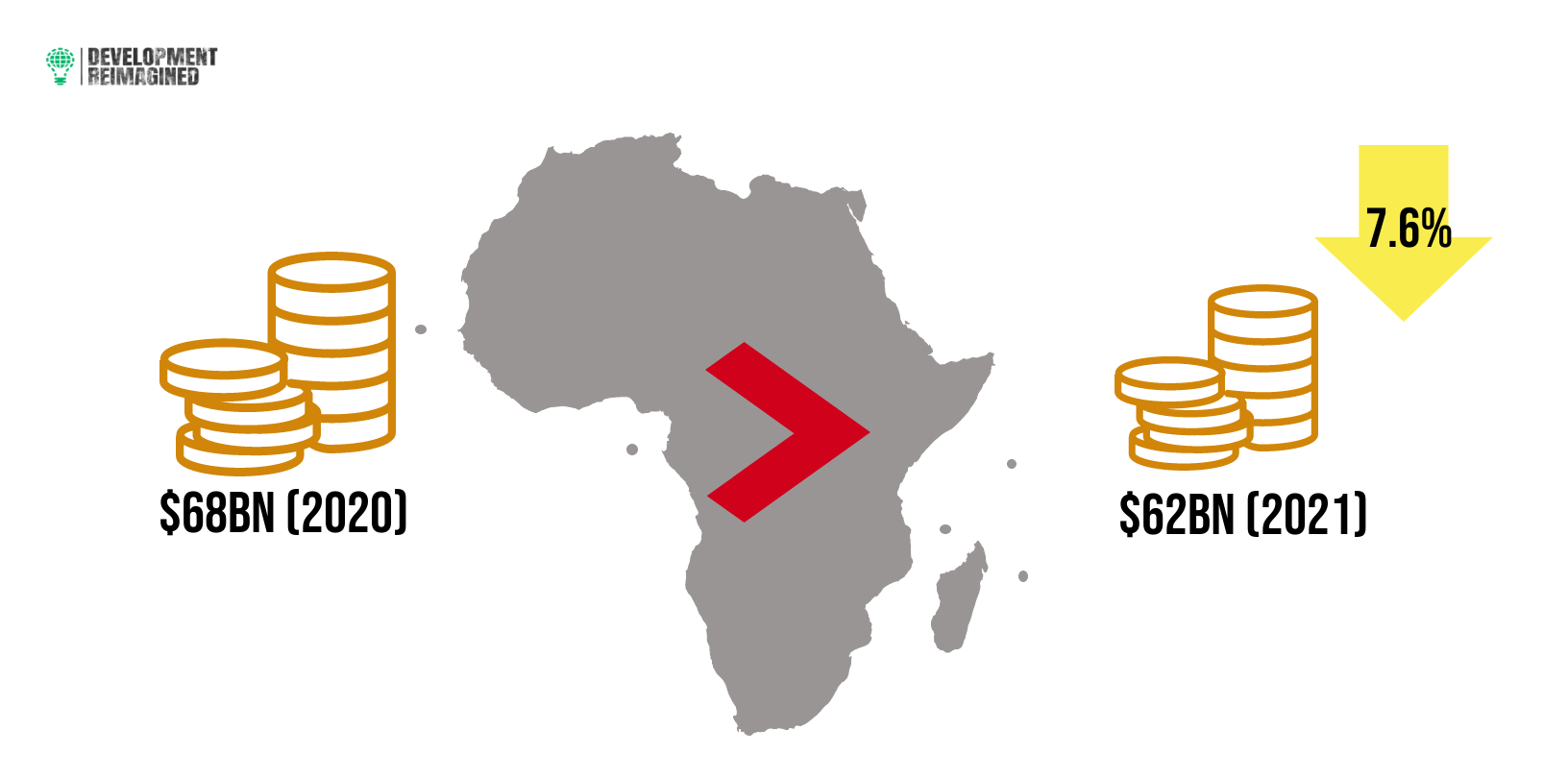Our infographic series has demonstrated that in a number of ways, African countries are continuing to act in a globally responsible manner to manage COVID-19 despite constrained circumstances. This month, we uncover the finance that is still being spent to address COVID-19 and its effects, especially given the need for social distancing, and the number of people the financial measures have reached.
As a whole, we estimate that African countries have allocated $63 billion in their national budgets to COVID-19 in the 2020-2021 financial year alone, representing 2.3% of African GDP. While it demonstrates the significant resources that have had to continue to be channelled into managing the pandemic, despite the fact that African governments have many other priorities, and huge financing gaps, from infrastructure to education, it also represents a fall of almost 8% of spending compared to 2020. It also remains considerably lower than other regions and countries across the world.
As was the case in 2020, African governments have allocated the $62bn across healthcare, social safety nets and business support, as well as – in some countries – targeted support to women and girls. The key new budget line in 2021 however, has been vaccines. To date, despite receiving some donations, we estimate that African countries have nevertheless had to spend a total of $8.4 billion on vaccine procurement and as a result, have reached over 337 million African people for vaccination. However, vaccine distribution remains concentrated within 10 countries that represent 70% of all vaccine distribution.
Furthermore, while we estimate that the $62 billion of African government’s pro-poor expenditure has reached over 201 million people in total in 2021, this expenditure is a significant resource drain for many African economies and could be spent elsewhere. The African Development Bank estimated that in 2020-21, African governments would need additional financing of over $150 billion to respond to the COVID-19 crisis. While our estimates suggest they have collectively reached close to this total ($130 billion), the hope was that at least some international support would be provided to cover this. Instead, International assistance to reach this goal continues to lag, for example in the 2021 SDR reallocation of $650 billion, African countries only received $33 billion, and most of this was concentrated in the most relatively wealthy African countries. Bilateral partners, development banks and the IMF have not stepped up enough either. For example, since the start of the pandemic, the World Bank has only committed (not spent) $39 billion USD to African countries, including for vaccines.
So what does this imply for 2022?
It is imperative for African countries to continue to invest in measures that will curb the spread to COVID-19 and tackle community transmission of new variants without shutting down economies. So far, the central mechanisms to do this are through vaccine procurement and social distancing.
When it comes to vaccines, African countries have faced a lack of supply caused by vaccine inequity and hoarding. African countries have now distributed over 60% of their vaccine supply and countries such as Egypt, Morocco, and Mozambique have distributed over 80% of their procured vaccines. And yet, 90% of African people remain unvaccinated. It is imperative to increase mechanisms for African governments to procure and distribute vaccines cheaply to reach those who remain unvaccinated, and in particular to reach the countries with the lowest level of vaccinations AND the largest development financing gaps.
Finally as far as social distancing in 2022 is concerned, countries need to be able to continue to support citizens, SMEs and larger firms as well as stimulate new channels of economic activity and services – such as e-commerce, digital education for school children, digital healthcare, and more.
So where will the finance – the fiscal space – for this come from – at or more than 2020 and 2021 levels?
With 2022 economic growth rates for African countries forecast by the IMF at a low average 3.7%, – itself due to slow recovery from low vaccine access, it is unlikely the finance can come from domestic resources. Meanwhile, African countries are continued to be penalised for their spending, despite their diligence to date. For example, Ghana has just been downgraded by credit ratings agencies for its debt rising to 82% of GDP. However as, Development Reimagined research has demonstrated, assessments of debt quality is essential to understanding a country’s debt distress risk.
The fact is, African government’s spending on COVID-19 is essential to providing protection to communities and mitigation for the social and economic impact of the crisis. Can Africa’s financial partners step up? Let’s see.
To review the data yourself, check out the graphics and numbers below, and do let us know what you conclude, and what you’d like us to find out next time.
 To find out how Development Reimagined can support you, your organisation or Government during the COVID-19 outbreak please email the team at clients@developmentreimagined.com .
To find out how Development Reimagined can support you, your organisation or Government during the COVID-19 outbreak please email the team at clients@developmentreimagined.com .
Special thanks go to Rosie Flowers-Wanjie, Osaru Omosigho, David Tinashe Nyagweta and Jing Cai for their work on the graphics and collecting/analysing the underlying data and this accompanying article.
The data was collated primarily from Africa CDC, as well as other sources including: government websites and media reports, the IMF policy tracker; Worldometer and the New York Times Vaccine Tracker. Our methodology is entirely in-house, based on analysis of vaccine, testing, spending, social distancing, income categories and other trends.
If you spot any gaps or have any enquiries, please send your feedback to us at team@developmentreimagined.com, we will aim to respond asap.
January 2022


